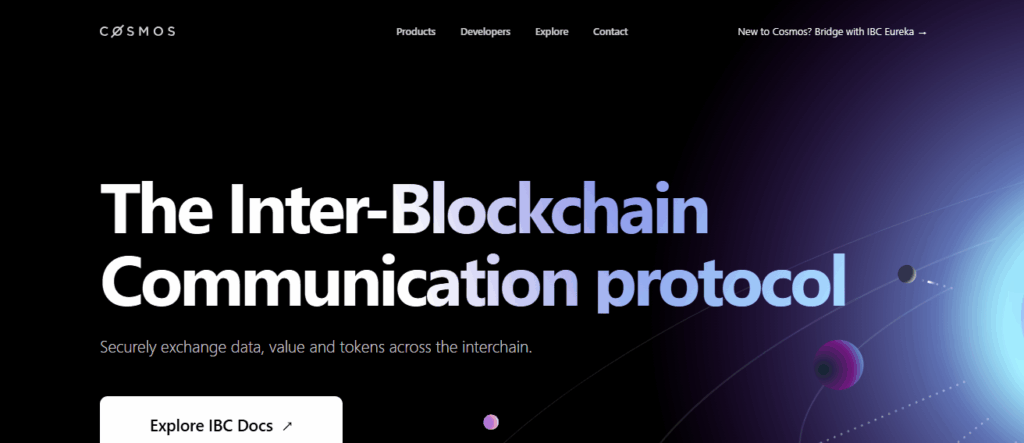In this article, I will explain how to run bridging with minimal finality risk. Bridging assets across blockchains can be risky if transactions aren’t fully finalized, potentially leading to loss of funds or inconsistencies.
I’ll break down practical strategies, best practices, and examples to make sure your cross chain transfers are secure, reliable, and safe from reorganization on blockchains.
What Is Finality Risk in Bridging?
In bridging, finality risk refers to the threat of a blockchain transaction being claimed as immutable, yet susceptible to reversals due to either casual chain reorganizations or chain consensus delays.
Whenever assets are bridged, the bridging destination must assume that the source transaction is final.
If finality is jumped to incorrectly, the possibility of being attacked through reorganization or double spending is very real, resulting in the loss or duplicate of funds.
This is why bridging is considered the most dangerous on chains that possess probabilistic finality, as probability is risk on chains.
How To Run Bridging With Minimal Finality Risk
Example: Cosmos IBC – How It Minimizes Finality Risk

Deterministic Finality (Tendermint Consensus)
Chains in cosmos finalize blocks instantly. There is no possibility of chain reorganization after a block gets confirmed.
Light Client Verification
IBC applies on-chain light clients to direct consensus. Eliminates reliance on external validators or multi-signers.
Trust-Minimized Security
Chains on both bridge ends independently verify their states. No single actor can lie about the bridging transaction.
Fast & Reliable Transfers
Users don’t wait for dozens of confirmations. Finality risk is effectively mitigated, which enhances the bridging speed while making it safer.
Strategies To Minimize Finality Risk
Wait For Adequate Confirmations
Confirm the transaction, but first, wait for a sufficient number of blocks. Ensure that Bitcoin is confirmed above 6, and ethereum with 12-20 confirmations.
Prefer Chains with Deterministic Finality
Use blockchains such as Cosmos (Tendermint), or Polkadot (GRANDPA), which have blocks that finalize and cannot be reverted.
Adopt Trust-Minimized Bridges
Light client-based bridges (i.e. IBC) that verify consensus directly. Multisig or centralized custodial services are to be avoided.
Dynamic risk policies
These are confirmation thresholds that vary with network states. Avoid additional waiting times during congestion, high reorg depth, or suspected attacks.
Fraud-proof systems or Watcher Mechanisms
Use optimistic bridges with challenge periods that allow neutral observers to contest fraud. Incentivize slashing for dishonest relayers or validators.
Regular Audits & Security Reviews
Review smart contracts for bridges, and check the consensus systems in place. Analyze reorg attack simulations and resiliency testing.
Why is finality risk Important When Bridging?
An early assumption of bridge closure, accompanied with active reorganization of the source blockchain, can result in the invalidation of the original transaction.
Such discrepancies among the source and destination chains can result in inconsistencies. In such scenarios, tokens can appear moved from one chain, without actually being fully finalized on the alternate

leading to scenarios where users can point to issues such as double-spending, fund duplication, as well as the outright loss of the advanced issued tokens.
Best Practices for Developers & Users
Implement Safe Confirmation Thresholds
Set conservative block confirmation requirements for probabilistic chains. Use adaptive policies that adjust thresholds during congestion or high reorg risk.
Prioritize Deterministic Finality
Build bridges on chains with strong consensus (e.g., Tendermint, GRANDPA). Prefer the protocols that finalize transactions instantly and irreversibly.
Adopt Trust-Minimized Architectures
Use light client–based verification instead of centralized multi-sig. For optimistic or validator bridges, consider fraud proofs and slashing incentives.
Continuous Monitoring & Security Audits
Track chain reorgs and the state of the network and validator activity. Regular audits should be done to find attack surfaces and test resilience to reorgs.
Fail-Safe & Pause Mechanisms
Add contract features to bridge that allow emergency pausing. If behavior that looks like unusual activity or consensus instability is detected, stop all transfers.
Wait for Recommended Confirmations
Adhere to the guidelines that accompany a bridge and wait before treating transfers as final. Be especially cautious with chains that exhibit probabilistic finality.
Using Trust-Minimized Bridges
Choose audited, light client–based or IBC-style bridges. Relying on centralized custodial bridges is better avoided, if possible.
Keep Tabs on Network Conditions
Monitor chain health during large transfers. Do not bridge during forks, congestion, or validator disputes.
Vary Your Bridging Options
Do not use a single bridge for all transfers. Different protocols and chains should be used to spread risk.
The Future of Bridging & Finality

Faster Consensus Algorithms ‒ Reduce confirmation to improve speed and safety of bridging.
Shared Security Models ‒ Multiple chains with confirming validators ensure consistent finality guarantees.
Zero-Knowledge Proofs ‒ Trustless verification minimizes reliance on external assumptions.
Cross-Chain Standards ‒ Universal protocols on different blockchains simplify secure bridging.
Dynamic Finality Policies ‒ Real-time adaptive thresholds to the network adjust strike-based limits.
Pros And Cons:-
Pros:
Reduced Risk of Loss of Funds – Guarantees that funds will not disappear due to transaction reversals and chain reorganizations.
Trustless Transfers – Light client based or Deterministic bridges minimize third-party involvement.
Faster Recognition of Transfers – Cross chain transactions can be recognized quicker due to deterministic finality.
Strengthened Attack Defenses – Protect against attack through monitoring, audits, and fraud proof mechanisms.
Improved User Confidence – Confidence level increases when users utilize bridging protocols that are reliable and audited.
Cons:
Increased Wait Periods – Transfers are slowed due to extended confirmation periods from probabilistic chains.
Difficult for Developers to Simplify – Light client or fraud proof implementations are technically difficult bridges.
Increased Cost of Operations – Expensive to maintain monitoring and audits, along with validator’s incentive systems.
Few available Bridges – Not all blockchains are equipped with trust minimized or deterministic finality bridges.
User May Be Perplexed – Users lack clarity regarding confirmation periods or necessary safety protocols.
Conclusion
In conclusion, it takes an optimized approach to execute bridging with only finality risk, which involves balancing speed, security, and trust.
Waiting for enough confirmations, preferring chains with deterministic finality, and trust-minimized bridging architectures limit risk. It is up to developers to enforce safe policies, while users must adhere to the best practices.
These measures facilitate safer cross-chain transfers with improved protection against reorgs and fund loss.
FAQ
Wait for sufficient confirmations and use trust-minimized bridges.
Chains with deterministic finality, like Cosmos or Polkadot.
Implement light client verification, dynamic confirmation policies, and audits.
Detects reorgs or unusual activity, preventing potential fund loss.
Risk that a transaction may be reversed before being considered final.



